- Your cart is empty
- Continue Shopping
Brain-ring system
$545
A game in which the most erudite person (or team) who answers the questions of the leader wins.
The system for the game "Brain-ring" has rules
1. General Provisions
1.1. This document describes the rules of the "Brain Ring" game, and also defines some generally accepted terms.
1.2. Competitions in the "Brain-ring" consist of match meetings (hereinafter - "Battles"). Each fight involves 2 teams, unless otherwise provided by the competition rules (hereinafter - "regulations"). Below, under the teams, everywhere we mean the teams taking part in the current battle.
1.3. During a battle, a team can include no more than 6 people. Substitutions during the battle are prohibited, unless otherwise provided by the regulations.
2. Conducting a battle
2.1. Each fight consists of one or more question rounds. Each question round asks one question.
2.2. Brain-ring questions must comply with the Sporting What? Where? When? ”, Unless otherwise provided by the regulations.
2.3. The competition regulations must establish the number of question rounds in a fight or the conditions for the end of the fight.
2.4. The goal of the game is to give the correct answer to a question in a strict time frame. Teams can give answers in turn, but not simultaneously. During the question round, the team can give no more than one answer.
2.5. Questions are asked by the facilitator. He also evaluates the correctness of the commands' answers.
2.6. Determination of the correctness of the answers is made in accordance with the Sports Code “What? Where? When ”, unless otherwise provided by the regulations.
2.7. If the rules permit the filing of appeals against the moderator's decisions, then it should contain a complete description of the procedures for filing and considering appeals.
2.8. The fight is considered over when the leader announces its result.
3. Determination of the battle results
3.1. For the correct answer, the team that gave it receives a certain number of game points (hereinafter - "Glasses"). The most common scoring schemes are described in the next two paragraphs.
3.2. When playing according to the scheme without accumulation, the team receives 1 point for each correct answer.
3.3. Stacked play uses the following rules:
- for the correct answer to the first question of the battle, the team receives 1 point;
- the number of points awarded for the correct answer in subsequent question rounds depends on the outcome of one or more previous rounds;
- if the correct answer was given in the previous round, then in the current round 1 point is awarded for the correct answer;
- if in the previous round no team gave a correct answer, then in the current round for the correct answer 1 point is awarded more than it would have been awarded for the correct answer in the previous round.
3.4. The scoring scheme must be determined by the regulations.
3.5. The winner of the battle is the team that scored the most points by the sum of all question rounds. If more than 2 teams participate in the battle, they are distributed according to the places occupied in the battle in accordance with the number of points scored for all question rounds.
3.6. In case of equality of points for both teams, the fight is considered to be ended in a draw. If more than 2 teams participate in the battle, then in any pair of teams the teams with the same number of points will share the corresponding places. The regulations may establish the method of determining the winner of the fight (and / or subsequent places) in case of equality of points.
4. Brain system
4.1. To determine the command that receives the right to answer the question, a special device is used (hereinafter - "Brain system"). The functions of the brain system are described in the following paragraphs.
4.2 The brain system should give a light and / or sound signal, which means the beginning of the time of the question round allotted for answers (hereinafter the beginning of the time allotted for answers is called "Starting the brain system").
4.3 The brain system must give a light and / or sound signal to indicate the end of the question round time allotted for answers. It is desirable that the brain system beeps once per second during the last 5 seconds of the time allotted for responses. Otherwise, the leader or his assistant must count the last 5 seconds.
4.4. The brain system should give the teams the opportunity to signal the leader about the readiness to give an answer. As a rule, this function is implemented in the form of peripheral devices of the brain system, located one for each team (hereinafter - "Buttons").
4.5. In the case when one of the teams signaled its readiness to give an answer (hereinafter - "Pressed the button"), the brain system must block signals from another team (or from all other teams) until the appropriate action of the leader or his assistant.
4.6. The brain system should count the time allotted for answering the question. When one of the teams presses the button, the brain system must stop the countdown until the appropriate action by the leader or his assistant.
4.7. The brain system should give the presenter or his assistant a clear opportunity to determine whether the button was pressed in the time allotted for answers, before it starts or after it ends.
5. Conducting a question round
5.1. Before the start of the question round, the presenter or his assistant sets the brain system to its initial state, in which the time is not counted, but the button presses are recorded.
5.2. The beginning of the question round is the leader's words “question number”, after which the leader announces the question number in the current battle.
5.3. After the announcement of the question number, the presenter reads out the question itself. When the reading of the question is over, the presenter says the word “time”, after which the presenter or his assistant starts the brain system. The interval between the word “time” and the start of the brain system should not exceed 3 seconds.
5.4. At the beginning of a question round, both (or all) teams have the right to answer a question for the current round.
5.5. If the team pressed the button after the presenter announced the question number, but before starting the brain system (hereinafter, this situation is called "False start"), then the team is deprived of the right to answer the current question.
5.6. After starting the brain system, the time allotted for answers begins. This time is 60 seconds. The regulations may establish that in the event of a false start, the time allotted for answers is reduced.
5.7. If the team pressed the button during the time allotted for the answers, it gets the exclusive right to answer the question. In this case, the presenter or his assistant stops the countdown of the allotted time on the brain-system and transfers the system to a state in which it only registers pressing the button of other commands. Next, the presenter indicates the team that has the right to give an answer.
5.8. The team that received the right to give the answer must immediately identify one player giving the answer (hereinafter - responding player). The team captain can name the responding player to the leader, but is not obliged to do so, unless otherwise provided by the regulations. The responding player must respond immediately. The rest of the team members must remain silent until the end of the answer and have no right to prompt the answering player in any way.
5.9. If a team violates any of the rules of clause 5.8, then its answer is automatically recognized as incorrect. The fact of violation of the rules is established by the host.
5.10. If the team answers correctly, the question round ends.
5.11. If a team gives an incorrect answer, it loses the right to answer in the current round. If both (or all) teams have lost the right to answer, the question round ends.
5.12. If, after an incorrect answer, one command (or several commands) retains the right to answer, the presenter or his assistant resumes the countdown on the brain system (hereinafter such a command is called "Restarting the brain system").
5.13. If, after an incorrect answer by one of the commands, several commands retained the right to answer, and one of these commands pressed the button before restarting the brain system, a false start is recorded, and this command loses the right to answer. If only one team has retained the right to answer, the false start is not recorded.
5.14. After restarting the brain system, there are two options for counting the time allotted for responses:
- counting continues from the current value;
- a new value of the time allotted for responses is set (for example, a command that retains the right to respond receives 20 seconds).
The rule of counting time after restarting the system should be determined by the regulations.
5.15. If the time allotted for answers has expired, the question round ends.
5.16. If no team has given the correct answer, the facilitator announces it immediately after the end of the question round. A variation of this rule is possible where the facilitator does not announce the correct answer and asks the same question in the next round. In this case, the regulations must explicitly determine how many rounds in a row the same question can be played, and the correct answer to the question must be announced before the end of the fight.
Download
![]() Instructions for setting parameters (Ukrainian)
Instructions for setting parameters (Ukrainian)![]() Instructions for setting parameters (Russian)
Instructions for setting parameters (Russian)
You must be logged in to post a review.





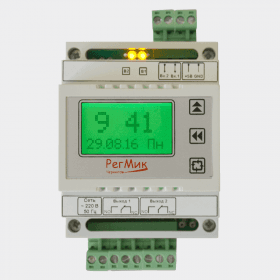

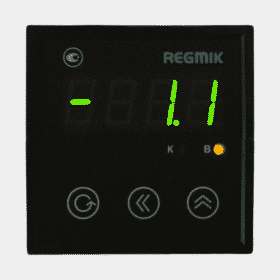

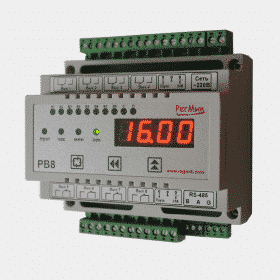
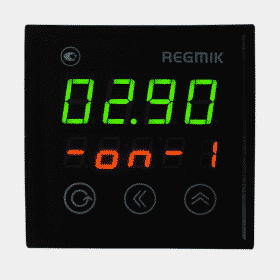
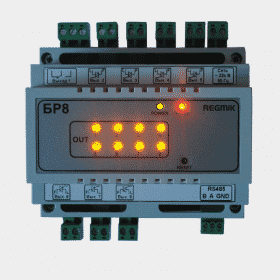
Відгуки
Відгуків немає, поки що.